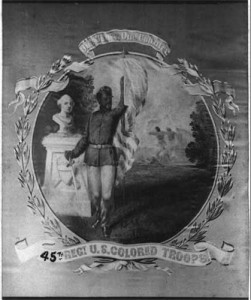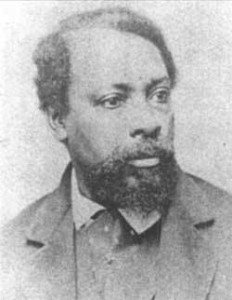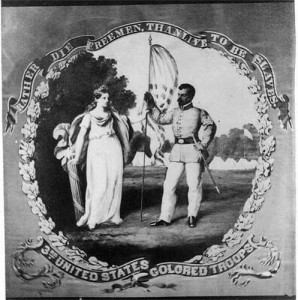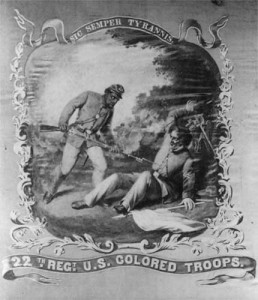Artist designed flags

As the ongoing sesquicentennial of the Civil War rotates through its succession of battles, from Bull Run to Gettysburg and the Wilderness, regimental flags and banners are being remembered as an important part of that history.
But who designed and painted the gallant standards that were carried into hellish gunfire and wicked shelling?

One answer is David Bustill Bowser, an African-American artist from Pennsylvania who created flags for African-American regiments (or “colored troops,” to use the phrase of 150 years ago). The initial obstacle he had to overcome was attaining the position of flag-maker.
When Black regiments were first being formed in 1863, he was blocked from the task. According to www.ExplorePAhistory.com, he “persuaded John Forney, a powerful Republican Philadelphia politician and newspaper owner, to argue that Bowser ‘certainly professes very remarkable talent. He has been active in the cause and is himself a colored man, and it seems to me there would be peculiar hardship in taking away this little job from him.’”

The plea worked, and Bowser, whose cousin was abolitionist Frederick Douglass, won the assignment to create banners for soldiers to follow as they marched off to battle. The artist also did portraits of John Brown and Abraham Lincoln. One of his two paintings of the president was lost until it was re-discovered in a barn in the 1980s.
The flag-maker was a strong activist involved in securing rights for African-Americans, who were demonstrating their loyalty to America by their participation in the war. For instance, addressing a gathering, according to a newspaper story, he “gave a detailed account of the praiseworthy conduct and unswerving loyalty of the colored people throughout the present unhappy war. He also said that now is the time for the colored people to be up and doing” while they had a chance to make an impression.

On one of his regimental colors, showing a Black soldier standing over a fallen Southerner, Bowser painted the phrase “Sic semper tyrannis,” the motto of Virginia. Ironically, the exclamation (“Thus always to tyrants”), which was meant in this instance to inspire Black troops, would later be shouted by John Wilkes Booth when he assassinated Lincoln.
After the War Between the States ended, Bowser knew that civil rights were not yet firmly attained, and he remained active as a public promoter of rights for Black Americans. He died in 1900 at age 80.
